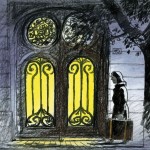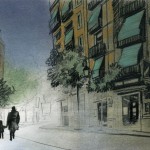This year is the twentieth anniversary of the Barcelona Olympic Games. That event boosted the transformation of the city. The benefits went beyond a mere facelift,
Hanging on the coat rack on the back of her office door, there is a jumper, a lab coat and dozens of lanyards with IDs for congresses and seminars specialising in human reproduction in which Anna Veiga has participated over the last few years.
Barcelona boasts a market tradition that dates back to the 19th century. The emergence of supermarkets and superstores in the 1980s endangered the survival of markets, but architectural renovation and the firm commitment to fresh products have preserved a model.
Markets have become a factor in revitalising the retail sector and safeguarding an urban culture under threat, as the catalysts for the emergence of new city amenities and the proponents of a healthy and balanced diet. Markets have contributed to
The local politics during the Spanish democracy in matters of markets policy has set trends and Barcelona –the leading member and seat of the international markets association Emporion– has served as a model for other cities. As Lewis Mumford said
Nothing better illustrates the landscape of a country and the way of life of its population than its market stalls. A trip to the market is akin to a visit to an art gallery, arousing and engaging all the senses.
Fresh products are the main asset of Barcelona’s markets, which jointly are the city’s leading company in the fresh food industry, having a market share of 30-35%, that increases to 70% in the case of fish. Markets have existed as
Products have changed, as has the seasonal produce calendar (transport); the way we conserve our food has changed (fridges), prices have fallen (supermarkets), eating habits have changed (pre-cooked food), but despite all of this, the markets are still with us.
This year marks the centenary of three Barcelona-born writers who, although their lives ran in parallel, shaped by the tragic circumstances of the war, defeat and exile, are fundamentally different in their creative aspects. Barcelona does not feature prominently in
Just like Einstein, Sònia Fernández-Vidal started out in the world of quantum physics because she didn’t know it was difficult. Nor did she ever think that it would be impossible to conduct research at CERN (the nerve centre of particle
The objects around us are such an important part of our world that sometimes we do not even realise that they transform our lives. The design of tools and machines, for example, not only makes our daily life easy or
“Who said that girls aren’t into engineering?” The engineer Mercedes Balcells, a pioneer in biomechanics and high-flying researcher at the Massachusetts Institute of Technology (MIT), asks the question and then points to herself, because she is the living proof that
Barcelona and Berlin, which often share positions in the rankings of the most attractive or enterprising cities, are what Amsterdam and London used to be in the past. They also share the fact that they are highly advanced cities in
The debate surrounding the great Barcelona novel has been marred by absurd rivalry. It is not a question of deciding whether the best novels have been written in Catalan or Spanish, but rather of attesting to both languages’ mutual influence.
Considered one of his best post-war novels, ‘Incerta glòria’ [Uncertain Glory] was first published in 1956, but his author extended and modified it until the final version of 1971 was reached.
Nada [Nothing] by Carmen Laforet, and The Time of the Doves by Mercè Rodoreda are two parallel works that complement each other in many ways, becoming two parts of the mosaic of the same historical reality. Read back to back,
In the novels of both Jaume Cabré and Carmen Laforet, the city is full of post-war fear and pain, but their main characters keep out of it and live their own personal tragedies. None of them is free to enjoy
There are fictional cities that seem livelier than real ones. Few authors have erected a Barcelona so much anchored in popular memory, so present in the collective imagination. For eight years I lived a stone’s throw away from the Alaska
Mauricio o las elecciones primarias (‘Mauricio or the Primary Election’) shows a city that doesn’t dare to do what it wishes, a Barcelona that goes from the prescribed dream of the Spanish transition to the promised dream of the Olympic
‘The Shadow of the Wind’ depicts a Gothic city with techniques typical of the audiovisual world. The spirit of the city is raised to the universal on its pages, for which great authors who had looked at Barcelona before act as models.
Barcelona has been constructed page by page from Miguel de Cervantes to the present day. It is pages and streets, neighbourhoods and ink. It is literature under the indecent lamplight of a brothel. It is more than a city. Nestled
Odes a Barcelona, 1840–2011 [Odes to Barcelona, 1840–2011] Selection, prologue and notes by D. Sam Abrams Barcelona City Council Barcelona, 2012 334 pages At the end of the prologue the critic Sam Abrams says: “Catalan literature has serious difficulties when
Five more minutes. And if she does turn up, will I recognise her right away, or will I not realise who she is initially and then have to cover it up with a “Silvia, you haven’t changed a bit”? These are the exact same words I am muttering to myself as I see her push through the main door.


























